The island of power. How does a closed for visitors Khortytsia live?
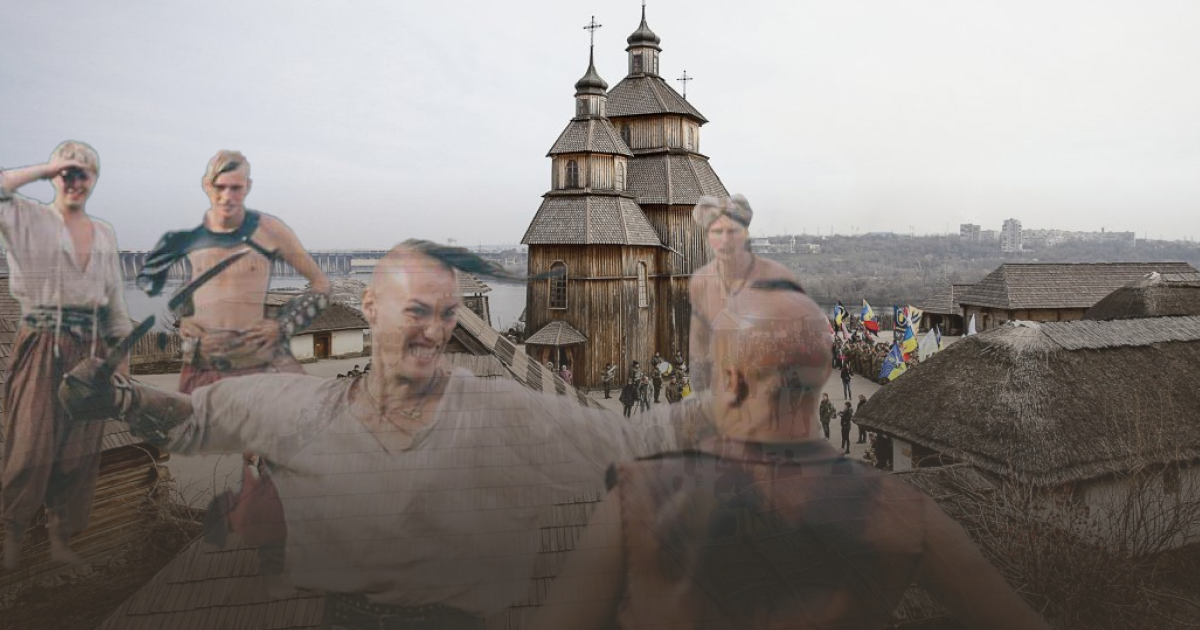
In the middle of industrial Zaporizhzhia lies a national reserve almost seven times the size of New York's Central Park. The island's history dates back to the Paleolithic period, but it is best known for the Cossack era.
A major restoration of the National Reserve began in 2021. The island's new branding won an award at the Cannes Lions International Festival of Creativity, and if not for the full-scale war, the reconstruction of the museums would have been completed by now.
Instead, the reserve faces losses of millions of hryvnias due to Russian shelling and a lack of tourists. Another challenge is the shallowing of the Dnipro River after the explosion of the Kakhovka HPP, which has damaged the environment and attracted illegal seekers of historical treasures.
This article tells the story of the reserve, known as the 'Cradle of the Cossacks', and how it has operated over the past year and a half.
From the Paleolithic to the Cossacks — the history of Khortytsia
Khortytsia has been inhabited since the millennium BC. The remains of a stone building dating back more than 3,500 years were found there in 2005. Later, nomadic Iranian and Turkic peoples passed through Khortytsia. They left behind sanctuaries and burial mounds, which are still preserved on the island.
Prince Sviatoslav I Ihorovych (Sviatoslav the Brave) probably died here during a battle with the Pechenegs in Kyivan Rus in 972. This is described in the Primary Chronicle (lit. Tale of Bygone Years) by Nestor the Chronicler. In 2011, a fisherman caught an ancient sword near Khortytsia. The blade bears the inscription ”+ULFBERH+T”, which has become a kind of trademark for precious swords belonging to the highest-ranking warriors. Historians believe it belonged to Prince Sviatoslav.
The island was part of a trading waterway "from the Varangians to the Greeks" that ran from the Baltic to the Black Sea. As sailors travelled down the Dnipro River from the north, they passed through rapids — stony embankments and rocks between which they had to manoeuvre to avoid damaging their ships.
The rapids stretched for almost 90 kilometres between the cities of Dnipro and Zaporizhzhia, and when the Dnipro HPP was built in 1932, they remained under the water of the reservoir.
The Cossacks learned to manoeuvre between the rapids. They had an advantage over the bulky Turkish galleys on light chaikas (wooden boats that could have one mast and one sail — ed.) Khortytsia is best known for the Cossack period in history. Dmytro Baida-Vyshnevetskyi, a magnate and one of the first leaders of the Cossack army, founded the prototype of the first Zaporozhian Sich, a fortress on the island of Baida, whose old name was Mala Khortytsia, in 1553. Five years later, the fortress was destroyed by Turkish-Tatar troops.
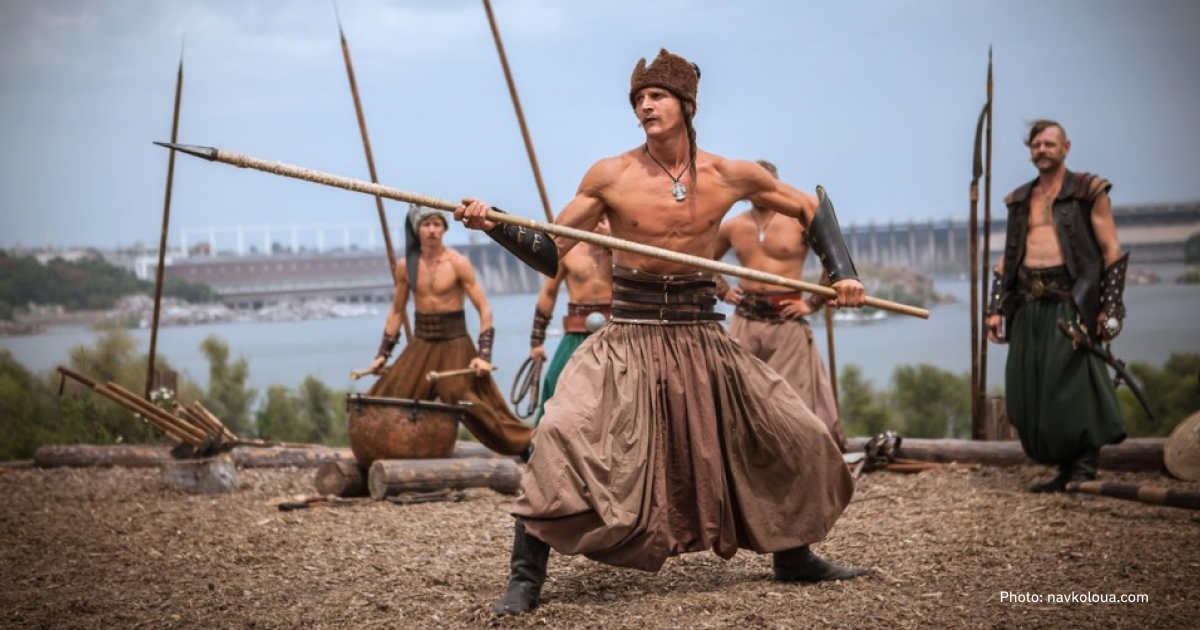
The Cossacks set up winter camps on Khortytsia and were engaged in hunting, cattle breeding, agriculture and fishing. Later, the registered Cossacks hired by the Polish-Lithuanian Commonwealth were based here.
Bohdan Khmelnytskyi, the hetman of the Zaporozhian Host and the founder of the Cossack Hetmanate, captured the fortress in 1648. Some of the registrars took his side, and the Khmelnytskyi Uprising (also known as the Cossack-Polish War — ed.) began.
In 1654, Khmelnytskyi signed the Treaty of Pereiaslav with the Tsardom of Muscovy as Russia supported the uprising against the Polish-Lithuanian Commonwealth and began to increase its influence over the Cossacks. The Treaty of Andrusovo and the Treaty of Perpetual Peace with the Poles included the Left Bank, Kyiv, Chernihiv-Sivershchyna and the Zaporozhian Sich in the Tsardom of Muscovy.
In 1736-1739, battles took place off the coast of Khortytsia during the Russo-Turkish War. Since then, the remaining ships have been preserved and, before the full-scale invasion, could be seen in the island's Museum of Navigation.
The Cossacks helped the Russian Empire to win the Russo-Turkish War of 1768-1774. The next year, after the war ended, the Russians destroyed the Zaporozhian Sich on the orders of Russian Empress Catherine II. All the property and Cossack archives were taken to St. Petersburg, and the Cossack foreman and koshovyi otaman Petro Kalnyshevskyi was sentenced to hard labour.
The construction of a historical and ethnographic complex on Khortytsia began only in 2004, and it has become a generalised image of all eight Sichs that existed on the territory of Ukraine. Fortifications, a church, a hut, a smithy, a pottery and a tavern have been reconstructed according to Cossack traditions.
Restoration and new branding
The project of the revival of Khortytsia began three years ago, in 2021. The Museum of the History of the Zaporozhian Cossacks and the park areas were to be restored in 2022. The work was stopped due to the beginning of the full-scale invasion.
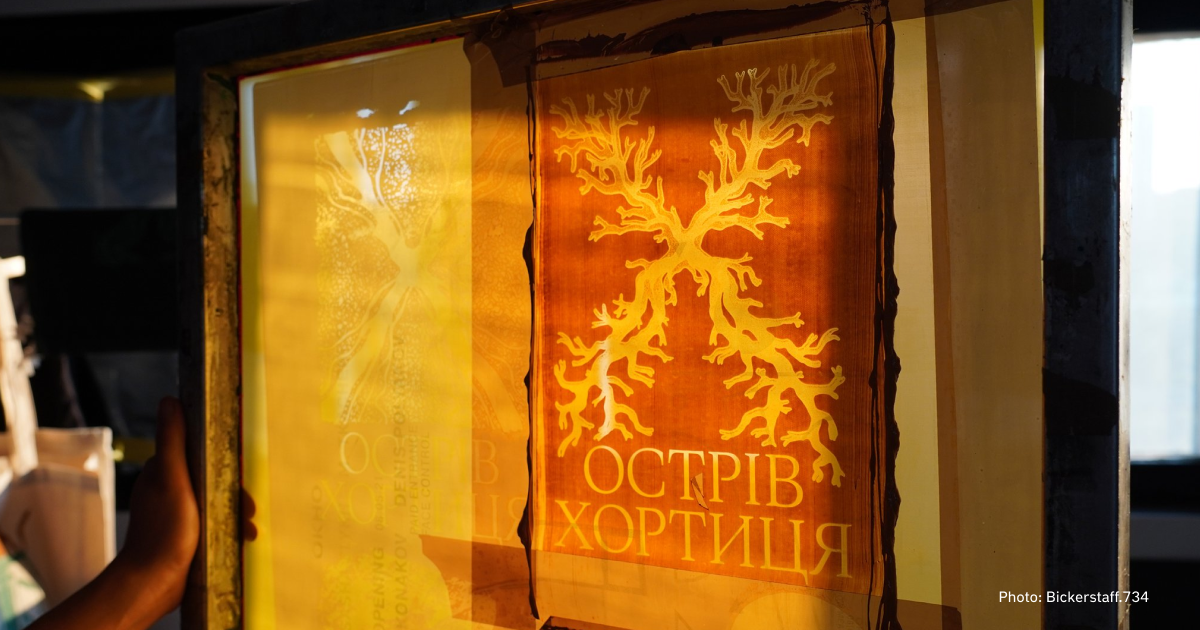
Creative agency Bickerstaff.764 has developed a new brand for Khortytsia, creating a visual code and logo that highlights the diversity of the place. For this branding, the agency won third place in the Design category at the Cannes Lions International Festival of Creativity in 2022.
The main task for us was to explain that Khortytsia is not just a place from textbooks. It is a real place of power for Ukrainians. The "X" sign is the first letter in the name of the island (Ukr. Хортиця — ed.) and is also a symbol of mystery, its meaning can be different for everyone. We took the "X" as a basis and created 24 logos with different characters. We developed positioning the island as a living organism with a soul and a voice,
Illia Anufrienko, creative director at Bickerstaff.734, told Suspilne.
Full-scale war: evacuations, bans on visits and shelling
The main museum exhibits from the Zaporizhian Sich complex and the City Beyond the Rapids museum were evacuated. Some Kurgan stelae were buried, while others were covered with sandbags and moved to the museum to protect them from shelling.
The first time Russians attacked Khortytsia was on April 21, 2022. Two rockets hit the island 45 minutes apart: one near the bridge where the Zaporizhzhia-Lviv evacuation train was moving, and the second hit the building of the sanatorium. Eight people were injured.
In May last year, the Russians also targeted a nature reserve — a fire spread over approximately 500 square metres of the protected area. The rocket landed close to museums and administrative buildings, which were not damaged. The environmental damage in Khortytsia is estimated at almost seven million hryvnias. But this was not the last attack.
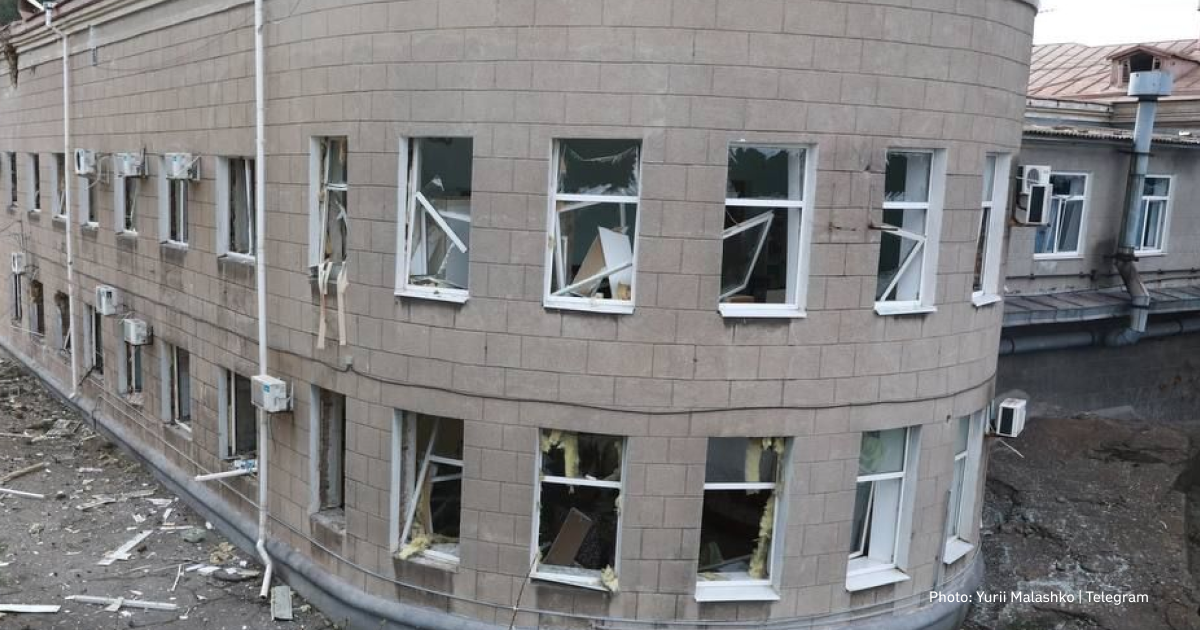
In previous years, Khortytsia hosted celebrations of Independence Day and the Day of the Ukrainian Cossacks and Defenders of Ukraine. In 2021, Khortytsia earned about UAH 5 million from visitors, but after the start of the full-scale invasion, the military administration banned visits to the forests, forest belts and the river banks.
The island is a strategic location as it is reached by bridges over the Dnipro River, there is a threat from rocket fragments, and and explosive items from the Second World War are still found on the shores after the shallowing of the river.
The museum and the Zaporozhian Sich complex are not functioning, but the reserve's employees are still doing their jobs. In addition to its historical value, Khortytsia has a diverse flora and fauna. There are more than 1,100 species of plants and 248 species of animals in the steppes, forests, lakes and rocks. Researchers continue to study and observe the changes caused by the shelling and the lowering of the Dnipro River.
The fact that the reserve was closed to visitors positively impacted the environment. It started during the coronavirus pandemic when visits were also restricted. It is important that the number of violations of the regime has decreased. People don't come here to barbecue like they used to. There used to be a lot of people here during the May holidays, which coincides with the nesting season,
says Mykhailo Mulenko, deputy head of the reserve's conservation department.
Consequences of the Kakhovka HPP explosion
The Russian army blew up the Kakhovka hydroelectric power plant on June 6. The water held back by the dam flooded the South, and the level of the Kakhovka reservoir and the northern part of the Dnipro dropped. Islands and rocks became visible near Khortytsia. Now you can see some of the rapids, most of which are still under the water of the Dnipro reservoir.
The reserve is located on the Dnipro cross-border bird migration route. The Dnipro hydroelectric power station keeps the water from freezing, and there are always fish, so rare species such as the Canada goose and geese flying from Finland come to the cliffs to spend the winter there. This area became unattractive for birds after the shallowing of the Dnipro River and because of people who violated the ban and came to the rocks.
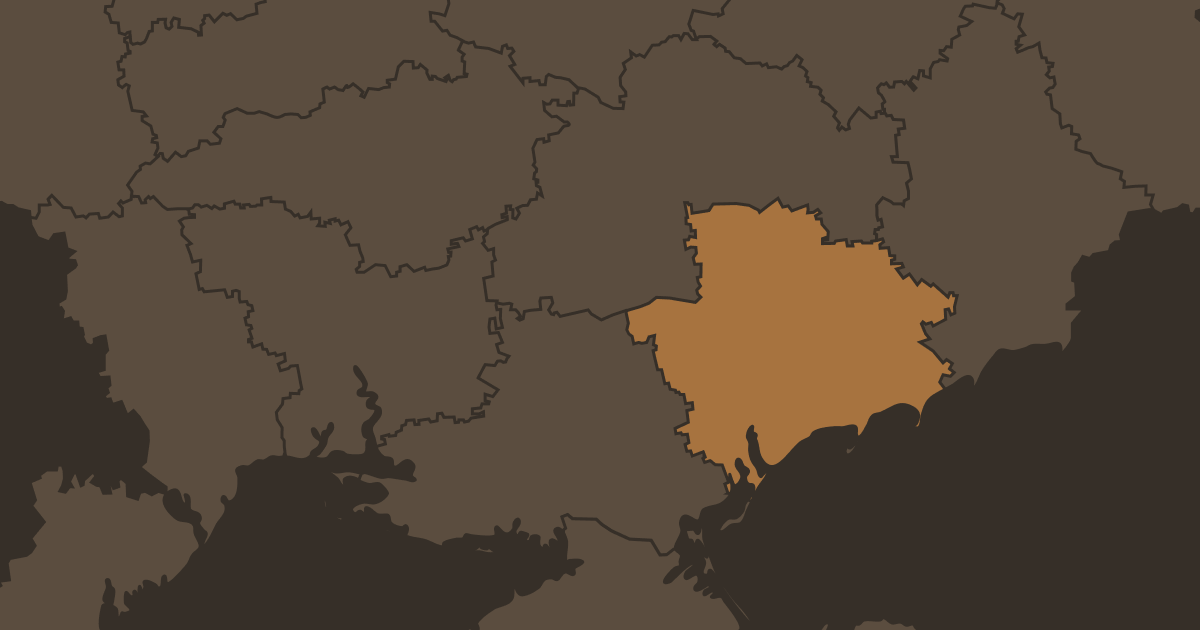
When the Kakhovka reservoir was filled in 1955-1958, a complex of permanent lakes was created on Khortytsia. Mykhailo Mulenko says that after the explosion of the hydroelectric power station, the straits and lakes of Khortytsia lost their connection with the Dnipro, or water leaked out of them through the soft ground.
Almost no lakes are left on the Khortytsia, and all aquatic vegetation has died from drought. The fish have managed to swim away, but other aquatic life, such as molluscs, have died on the bottom of the lakes.
Rediscovering history
Many previously submerged objects and artefacts were discovered after the water level dropped. The remains of wooden bridges built in 1944 had been underwater for almost 70 years.
During the World War II, the Dnipro HPP dam was destroyed twice. First, the Soviet authorities did it before they withdrew in 1941. The Germans rebuilt the dam during the occupation. In 1943, they destroyed it themselves. To allow the Red Army offensive to continue, temporary railway bridges were built over the Khortytsia. Their remains can now be seen above the water.
One of the finds is a bronze dagger from the Late Bronze Age, the second millennium BC.
A seven-metre-long oak boat was discovered near the shore at the end of June. Preliminary estimates suggest that the boat could be up to 500 years old (radiocarbon analysis is required for more accurate dating).
An artefact found in the reserve is the property of the state and should be transferred to a museum. However, "black archaeologists" — diggers who illegally search for artefacts in heritage sites — are also hunting for heritage.
The main point is actually rather not that they can find something ancient and take it away, but that they can damage the monument itself. It loses its significance for science. It will be impossible to date it, to determine what kind of culture it is, and what kind of monument it is,
says Mykhailo Mulenko, a representative of the reserve.
Part of the Zaporizhzhia region is occupied by Russians, and the regional centre is often shelled from the temporarily occupied territories. As in the past, the Russians are trying to destroy another page of Ukraine's history. Or even the whole country.


